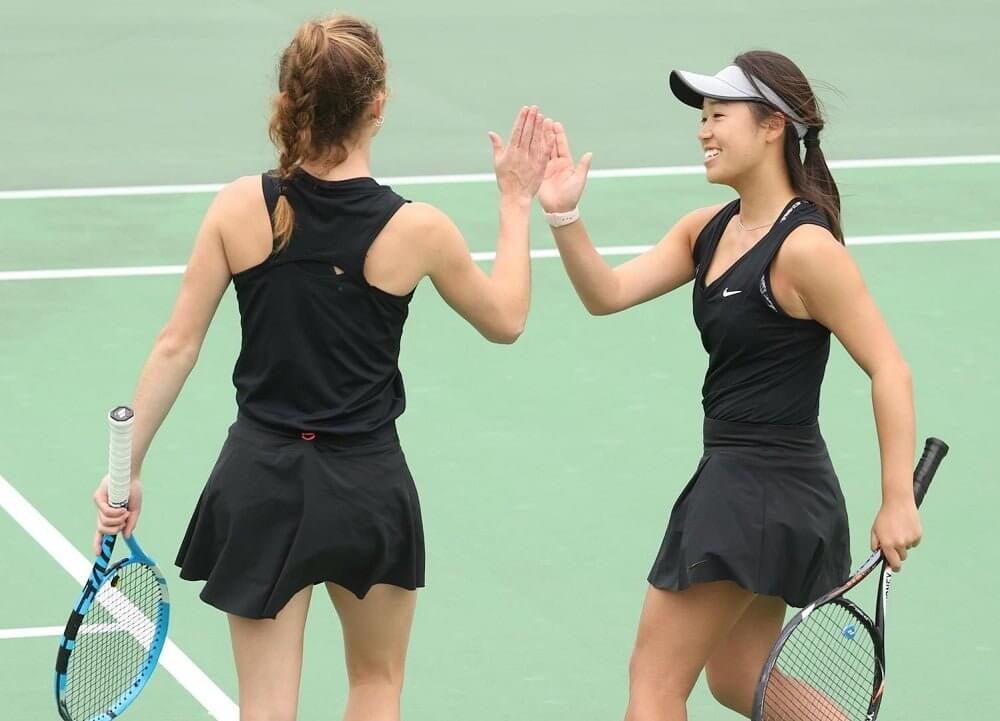Have you ever played in a doubles tennis match and found that you or your doubles partner consistently have trouble winning your service games?
If so, you and your partner can try the following doubles strategies to hold serve and break the cycle!
Poaching
The first of the doubles strategies is to have the server’s partner look for opportunities to volley the return. This is called poaching. For this strategy, the server’s partner will play from the net while the server is serving the ball. In this case, the server should try to place their shot down the middle or “T” of the service box. When serving down the “T,” the returner does not have the angles to hit a down-the-line shot. Therefore, the server’s partner can expect to move diagonally toward the middle of the court to volley the return. The volley target should be crosscourt at the returner’s partner’s feet at the service line. This makes for a tough shot for the returner’s partner! Poaching helps to hold serve in that the serving team puts themselves on the offense early on in the point.
I-Formation
In the I-Formation, the server will stand close to the center mark as if serving for a singles game. Their partner at the net will get low and straddle the centerline in the service boxes. The net player will signal the server, indicating which direction they will move once the serve is hit. The server should then serve down the middle to the “T” to limit the angles the returner can hit. Once they serve the ball, they will move to the opposite side of the court from where their partner is. In the I-Formation, the goal is for the server’s partner at the net to volley the return of serve to take the offense. Also, the movement of the net player can confuse the opponents and cause them to make an error.
Australian
In the Australian Formation, the server will stand close to the center mark as if they were serving for a singles game. In contrast, their partner at the net stands in the service box on the same side as the server. Once they hit the serve, the server will move to the other side of the court. This strategy can be helpful if the returning team has strong crosscourt returns. If they try to return crosscourt now, the server’s partner can volley the shot and take the offense. If they decide to return down the line, it’s a tougher shot to make. The net is higher, and the court distance is shorter.
Baseline
The last of the strategies to hold serve would be for the server and their partner to play back at the baseline. If the serving team is having trouble holding serve due to missed volleys, yet their ground strokes are strong, this is an excellent strategy to try. It also takes a target away for the returning team if they were winning points from volleying to the server’s partner playing the net.
Next time you find that you or your partner are not holding serve, you can test out the above doubles strategies. Make some adjustments to your game, and you can change the momentum and win!
